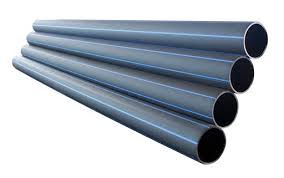Sep . 25, 2024 19:49 Back to list
ppr tube service
Understanding PPR Tube Service A Comprehensive Overview
In the realm of plumbing and construction, the choice of materials and services plays a crucial role in determining efficiency, sustainability, and cost-effectiveness. One material that has gained prominence in recent years is Polypropylene Random Copolymer (PPR). PPR tubes, known for their versatility and durability, have transformed traditional plumbing systems, ensuring reliable water supply and efficient temperature management. This article delves into PPR tube service, exploring its advantages, applications, installation processes, and maintenance practices.
Advantages of PPR Tubes
1. Durability and Longevity PPR tubes are designed to withstand high temperatures and pressures, making them suitable for various applications. They are resistant to corrosion, chemical reactions, and UV radiation, which enhances their lifespan compared to traditional metal pipes.
2. Temperature Resistance PPR pipes can handle temperatures ranging from -20°C to 95°C, making them ideal for both hot and cold water supply systems. This temperature range ensures reliability in various environments, from residential to industrial settings.
3. Lightweight and Easy to Handle Compared to metal pipes, PPR tubes are significantly lighter, which simplifies transportation and installation. This lightweight nature also reduces the burden on supporting structures in buildings.
4. Cost-Effectiveness Though the initial investment in PPR tubes may be slightly higher than traditional materials, their durability and minimal maintenance requirements lead to long-term savings. Additionally, the ease of installation saves labor costs.
5. Environmentally Friendly PPR is a recyclable material, contributing to sustainability efforts. Its production process has a lower environmental impact compared to other plastic and metal options, making it an eco-friendly choice for construction projects.
Applications of PPR Tubes
PPR tubes are utilized in a wide range of applications due to their properties. Some of the most common uses include
- Plumbing Systems PPR is widely used for residential and commercial plumbing, including water supply and drainage systems. Its resistance to scaling and deposits ensures clean and safe drinking water.
- Heating Systems Their thermal insulation properties make PPR tubes suitable for heating applications, such as underfloor heating and radiator connections. They efficiently transport hot water without significant heat loss.
- Industrial Applications In industries handling chemicals, PPR tubes are preferred for their chemical resistance. They are suitable for transporting various liquids and gases in manufacturing and processing facilities.
- Agriculture PPR tubes are increasingly used in irrigation systems due to their durability and resistance to weather conditions, ensuring a reliable water supply for farming.
ppr tube service

Installation Process
Installing PPR tubes involves several crucial steps to ensure a successful plumbing system
1. Planning and Design Before installation, proper planning and design are essential. Understanding the layout and requirements of the plumbing system helps in determining the pipe diameter and lengths needed.
2. Cutting and Joining PPR tubes are cut to the required lengths using specialized tools. The joining process typically employs a heat fusion technique, where the pipe and fittings are heated and then joined to create a seamless bond. This method provides strength and leak-proof connections.
3. Testing After installation, pressure testing is conducted to check for leaks and ensure the system's integrity. This step is crucial for maintaining safety and performance standards.
4. Insulation While PPR pipes have good thermal insulation, additional insulation may be applied, especially in heating applications, to further minimize heat loss and enhance energy efficiency.
Maintenance of PPR Tubes
One of the significant benefits of PPR tubes is their low maintenance requirement. However, regular checks are advisable to ensure the system operates efficiently
- Visual Inspections Routine checks for visible signs of wear or damage can help prevent major issues. Inspect joints and connections for leaks.
- Cleaning Although PPR is resistant to scale and sediment build-up, periodic cleaning can help maintain optimal flow rates. Flushing the system can remove any accumulated debris.
- Monitoring Pressure Keeping an eye on the water pressure helps identify potential issues early. Any sudden change in pressure may indicate a blockage or a leak.
Conclusion
PPR tube service shows significant promise in modern plumbing and construction. Its advantages in durability, cost-effectiveness, and environmental sustainability make it a preferred choice for various applications. With proper installation and maintenance, PPR tubing can provide reliable service for decades, underscoring its status as an essential material in contemporary infrastructure projects. As industries continue to evolve, the adoption of PPR tubes is likely to expand, paving the way for more innovative plumbing solutions that meet the demands of a changing world.
-
High-Quality PVC Borehole Pipes Durable & Versatile Pipe Solutions
NewsJul.08,2025
-
High-Quality PVC Perforated Pipes for Efficient Drainage Leading Manufacturers & Factories
NewsJul.08,2025
-
High-Quality PVC Borehole Pipes Durable Pipe Solutions by Leading Manufacturer
NewsJul.08,2025
-
High-Quality PVC Borehole Pipes Reliable PVC Pipe Manufacturer Solutions
NewsJul.07,2025
-
High-Quality UPVC Drain Pipes Durable HDPE & Drain Pipe Solutions
NewsJul.07,2025
-
High-Quality Conduit Pipes & HDPE Conduit Fittings Manufacturer Reliable Factory Supply
NewsJul.06,2025

